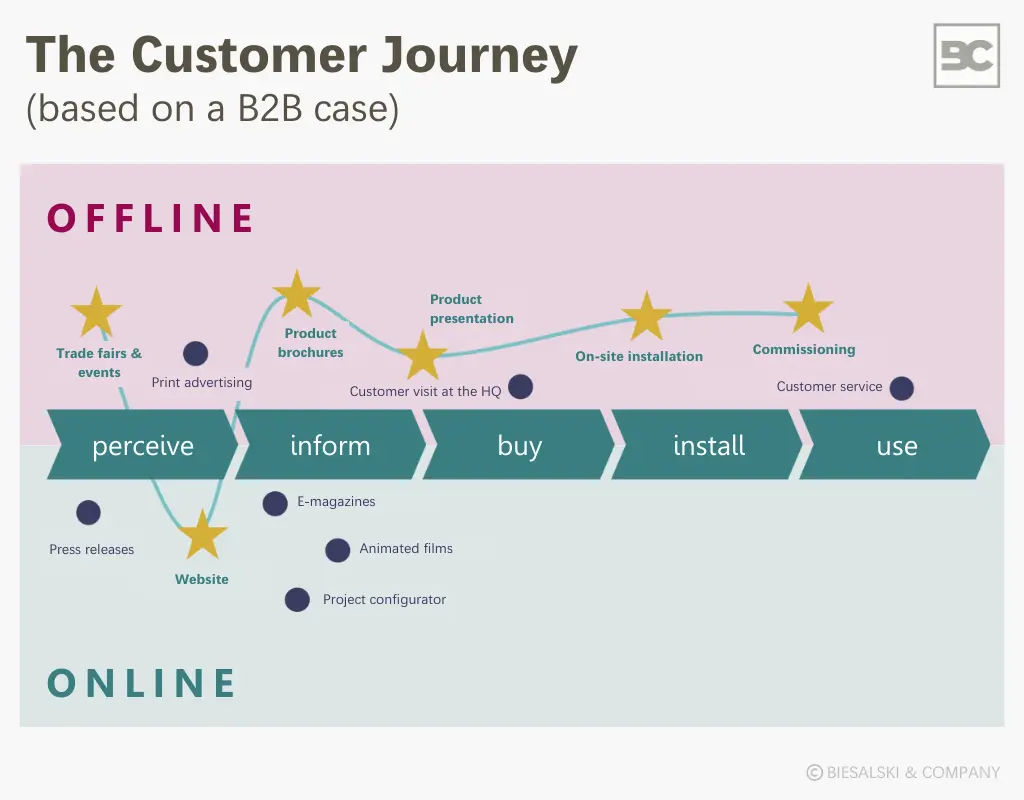Customer Journey
What is meant by the Customer Journey?
The Customer Journey maps out all touchpoints between (potential) customers and a brand throughout the purchasing decision process. This includes all interactions across various channels — both online and offline. The Customer Journey is divided into distinct phases of the purchasing process, with each phase linked to potential touchpoints and critical decision-making moments (referred to as Moments of Truth).
A similar concept exists in employer branding, known as the Candidate Journey, which outlines the key stages and interactions a candidate experiences when engaging with an organisation’s recruitment process.
What is the goal of a Customer Journey?
The primary goal of the Customer Journey is to create transparency around the purchasing decision process. Through which channels does the target group perceive the brand? What needs does the target group have during each phase of the purchasing process? Which touchpoints ultimately influence the purchase decision?
Based on these insights, touchpoints and critical decision-making moments can be optimised. The outcome is a consistent brand presence and a unique customer experience that positively impacts customer retention, acquisition, and ultimately, revenue growth.
Developing a Customer Journey through Customer Journey Mapping
A Customer Journey is developed as a model, recognising that each customer follows their own path. Typically, the journey is divided into five standard phases of the purchasing decision process (as shown in the simplified example below): awareness, research, purchase, installation, and usage.
The journey begins with the awareness phase, where the first contact between the customer and the company is established. The next phase, research, involves comparing alternatives, gathering information, and consulting reviews. This is followed by the purchase of the product or service. Depending on the offering, this may be followed by installation or activation of the product. The final phase involves usage, including any post-purchase services such as customer support.
Each phase is associated with relevant touchpoints (both online and offline), and critical Moments of Truth are highlighted. The Customer Journey differs between B2C and B2B contexts. In B2B, purchasing decisions are often influenced by direct personal contact, whereas in B2C, a wide variety of direct and indirect touchpoints must be considered.

The development process of a Customer Journey is initiated through Customer Journey Mapping. Before designing the journey, it is essential to thoroughly understand the target group—i.e., current and potential customers. Persona profiles play a crucial role in creating a clear picture of the target group, which serves as the foundation for crafting the Customer Journey.
The optimisation of purchase-relevant touchpoints and the enhancement of the overall customer experience are then systematically achieved through professional Touchpoint Management and UX Management.
Contact
Would you like an informal discussion on the topic?
We would be happy to support you in developing your customer journey. Our experts are available to assist you at +49 89 273 73 54 00 or via email at info@biesalski-company.com.
You can also find more information about Biesalski & Company’s services related to customer journey mapping here.


